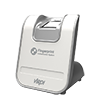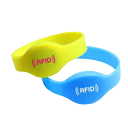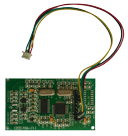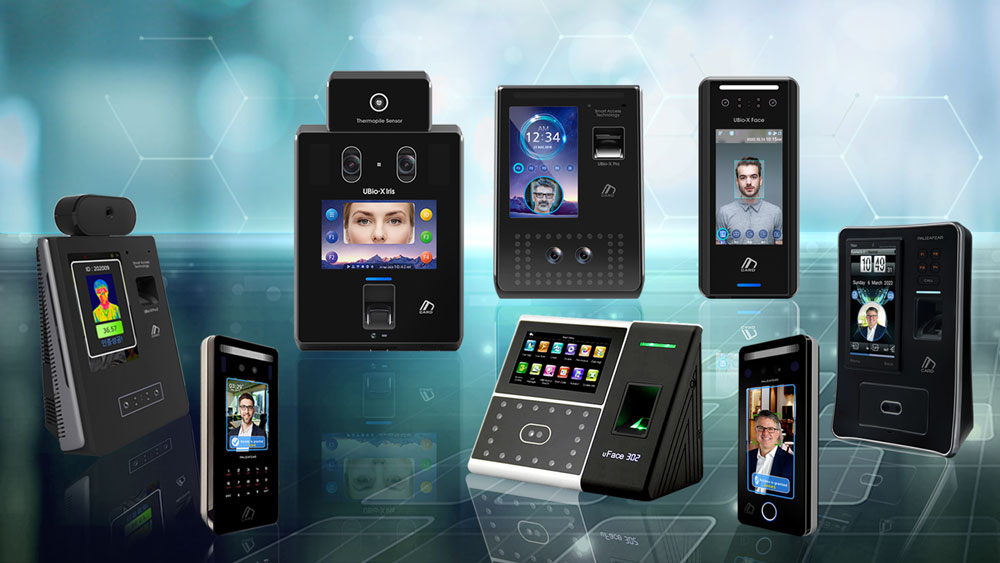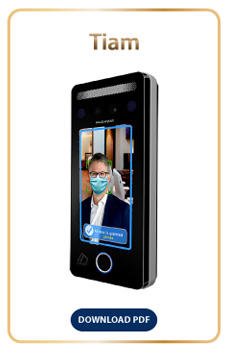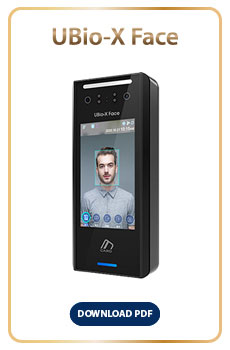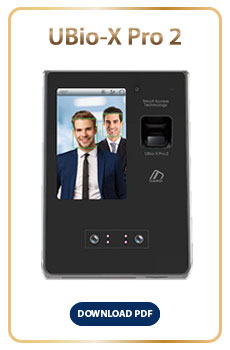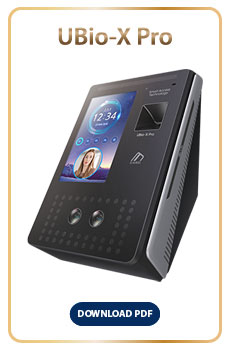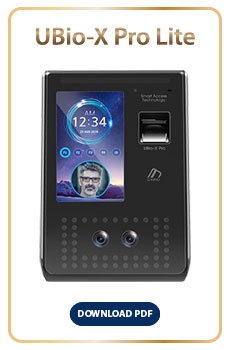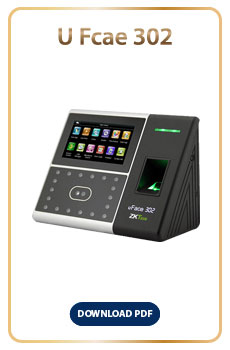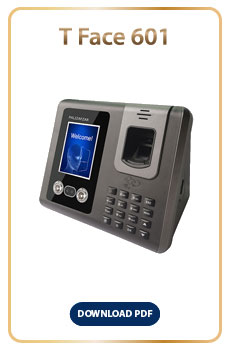Like biometric access control systems, facial recognition time and attendance are designed to identify employees' unique physiological features. Many technology companies, especially Apple, Samsung, and Google, integrate biometric authentication with their hardware. Unlike card-based time and attendance systems, employees cannot register their traffic logs instead of each other through biometric time and attendance systems, particularly face, fingerprint, palm, and iris recognition.
Table of Contents
- What Are Face Recognition Time and Attendance Systems?
- Facial Recognition Attendance Device Lists
- Comparison of facial recognition device models
- Three-Dimensional Facial Recognition Systems
- Face Time Attendance Systems vs. Fingerprint Time Attendance Systems
- Crucial Differences of Palizafzar Face Recognition Terminals.
- Advantages of Facial Recognition Time and Attendance Machines
- The Challenges of Traditional Workforce Management
- Key Features to Look for in Employee Time Attendance Devices
- How Facial Time Attendance Terminal Improves Productivity?
- Integrating Facial Time Attendance Devices with Other HR Systems
- Choosing the Right Employee Time Attendance Device for Your Business
- History of Most Important Face Recognition Events
- Conclusion: The Future of Workforce Management with Face Time Attendance Devices
What Are Face Recognition Time and Attendance Systems?
Face recognition time and attendance machines are the newest technology-based security solutions that they provide security at the workplace by recognizing facial features. Face recognition time attendance devices record facial features and save recorded patterns in a database or a device memory. When employees stand in front of the attendance device, it receives the face employee and performs a three-dimensional or two-dimensional analysis of facial points that is unique to each employee; then, an adaptive pattern is obtained with predefined patterns. When authentication is successful, devices confirm employees' identity, and their entrance or exit time will be registered. Otherwise, the act of identifying a person is not successful.
Facial Recognition Attendance Device Lists
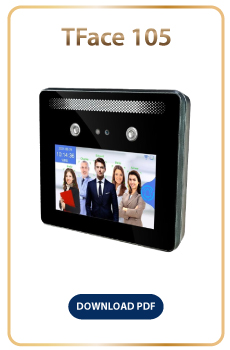
TFace-105 Facial Recognition Attendance Device
Comparison of facial recognition device models
| Models | Tiam | Titan | X Pro2 | X Pro | Pro Lite | X Face | UFace 302 |
|---|---|---|---|---|---|---|---|
| Users | 15,000 | 100,000 | 500,000 | 500,000 | 500,000 | 500,000 | 10,000 |
| Faces | 5,000 | 50,000 | 20,000 | 30,000 | 7,000 | 20,000 | 3,000 |
| Fingerprints | 5,000 | 100,000 | 100,000 | 100,000 | 100,000 | x | 4,000 |
| Event Logs | 500,000 | 10 M. | 10 M. | 10 M. | 10 M. | 10 M. | 100,000 |
| Log Images | N/A | 20,000 | 20,000 | 20,000 | 20,000 | 20,000 | N/A |
| Made in | Iran | Iran | South Korea | South Korea | South Korea | South Korea | China |
Three-Dimensional Facial Recognition Systems
Three-dimensional face recognition systems use three-dimensional sensors to gain information about facial shapes. This information is used to identify distinctive features on the surface of faces, such as eyes, nose, and chin.
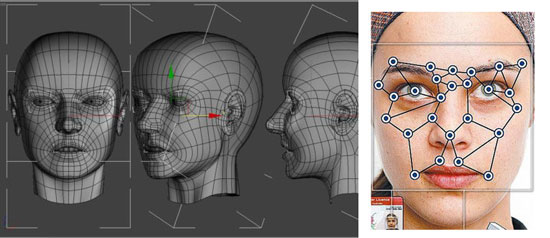
Face Time Attendance Systems vs. Fingerprint Time Attendance Systems
- Saving time and reducing disease: When diseases such as colds and viruses spread among employees can reduce the presence of employees at work. Employees can enter and exit in a shorter time using a face recognition attendance device because there is no need to touch the surface of the time attendance device. It saves time and also minimizes the spread of diseases due to physical contact.
- Face time attendance devices can be helpful in workshop environments, industrial sectors, buildings, and all the environments that people haven't healthy fingerprints according to their work or use physical of his body to do tasks. But in places such as office environments, government organs, that work environment is healthy and without concern and involvement of body organs, using a fingerprint time attendance device can be a good choice for access control.
- Face recognition time attendance devices have more passing through records than fingerprint time attendance devices, and it can be a good choice for places with more than 100 personnel. Still, in small offices with less staff, the use of fingerprint time attendance devices will be economically more economical.
Crucial Differences of Virdi Face Recognition Terminals
| UBio-X Pro | UBio-X Pro Lite | UBio-X Pro 2 | UBio-X Face | |
|---|---|---|---|---|
| Template Compatibility | No | AC7000 / T9 | UBio-X Face | UBio-x Pro 2 |
| Users | 30,000 | 7,000 | 20,000 | 20,000 |
| Authentication Method | Fingerprint/Face/Card | Fingerprint/Face/Card | Fingerprint/Face/Card | Face/Card |
| Detection Type | Stationary | Stationary | Walk Through | Walk Through |
| Image Technology | IR Light | IR Light | Visible Light | Visible Light |
| Server Solution | UNIS / Alpeta/ SDK | UNIS / Alpeta/ SDK | Alpeta / SDK | Alpeta / SDK |
Advantages of Facial Recognition Time and Attendance Machines
The use of a face recognition attendance device enables employers to track passing through and eliminate human error. It means that the exact number of employees' hours and operations are transferred to the system's payroll, and the employer doesn't worry about overtime.
- Automatic and precise system: Accurate face recognition reports all presence, absence, and overtime report items. The identification process starts at any time with just an infinite speed. This system can match thousands of users in less than a second and provide information that is 100% correct without having to lift your finger.
- Save time: Face recognition time attendance allows employees to register entrance or exit time without requiring touch devices.
- Escape from pen and paper system: Using face recognition time attendance device saves the cost of organization it also makes it easy to keep information because face recognition attendance systems use electronic media to store information instead of paper Also, the use of this system creates a good feeling among the employees of the organization.
- Payroll management: The most important business process is Payroll management in any organization. Using a face recognition device reduces the hard work and saves a lot of time calculated manually. Using a biometric time attendance system such as face and fingerprint time attendance device is known the only way to accurately calculate payroll system because time data can be kept automatically, and with the help of payroll software, the data enter quickly into a payroll system, and payment bill will make easily within a few hours.
- Auto tracking system: Use of face recognition time attendance is a time tracking facelift without needing personnel to monitor the system 24 hours a day. A face recognition time attendance device is like an intelligent person that removes human error with automatic systems. Time and attendance systems can accurately identify the presence, absence, and overtime reporting of a fast and accurate process. Using a face detection attendance system, you can manage and plan a record of the overall staff presence of the organization, including maintaining the time of entrance and exit, overtime, unregistered passing, absenteeism, missions, and everything. Additionally, the regularity of employees can be recognized through it, which ultimately can increase productivity Hours.
- Enhanced Security: Face recognition technology minimizes the risk of buddy punching and identity fraud.
- Improved Efficiency: Automate attendance processes, saving valuable time for both HR and employees.
- Streamlined Reporting: Generate comprehensive reports on attendance data for analysis and decision-making.
The Challenges of Traditional Workforce Management
Managing employee attendance has always been a challenge for organizations. Traditional methods relying on manual processes, such as paper registers or card-based systems, are prone to errors, time theft, and inefficiencies. They often require significant administrative effort and offer limited visibility into employee attendance patterns.
Key Features to Look for in Employee Time Attendance Devices
Face Recognition
- Advanced facial recognition technology for accurate identification
- Support for different poses, lighting conditions, and facial accessories
Integration Capabilities
- Seamless integration with existing HR systems, such as payroll and performance management
- Compatibility with various hardware devices, including time clocks and biometric scanners
Mobile Accessibility
- Mobile app for employees to clock in/out and view their attendance records
- Real-time notifications and alerts for managers and supervisors
How Facial Time Attendance Terminal Improves Productivity?
By automating attendance tracking and streamlining administrative tasks, face time attendance devices significantly improves productivity. Managers can access real-time attendance data, promptly identify attendance issues, and take necessary actions. This newfound visibility enables better workforce planning, reduces absenteeism, eliminates buddy-punching, and promotes a culture of accountability and punctuality.
Integrating Facial Time Attendance Devices with Other HR Systems
To achieve a comprehensive workforce management solution, it is essential to integrate Facial time attendance devices with other HR systems. Seamless integration with payroll, leave management, and performance evaluation systems allows for seamless data flow, eliminating data duplication, and maximizing operational efficiency.
Choosing the Right Employee Time Attendance Device for Your Business
Evaluate Your Needs
Assess your organization's requirements and prioritize the key features you need.
Research and Compare
Consider multiple software providers, read reviews, and request demos to make an informed decision.
Scalability and Compatibility
Choose a terminal solution that can grow with your business and integrates well with your existing systems.
History of Most Important Face Recognition Events
- 1960 - Face recognition becomes semi-automated The first semi-automatic face recognition system was developed by Woodrow W. Bledsoe under contract to the US Government. This system required the administrator to locate features such as eyes, ears, nose, and mouth on the photographs. This system relied solely on the ability to extract useable feature points. It calculated distances and ratios to a common reference point that was compared to the reference data.
- 1970 - Face Recognition takes another step towards automation. Goldstein, Harmon, and Lesk used 21 specific subjective markers such as hair color and lip thickness to automate face recognition. The problem with both of these early solutions was that the measurements and locations were manually computed.
- 1993 - FacE REcognition Technology (FERET) program is initiated The FacE REcogntion Technology (FERET) Evaluation was sponsored from 1993-1997 by the Defense Advanced Research Products Agency (DARPA) and the DoD Counterdrug Technology Development Program Office in an effort to encourage the development of face recognition algorithms and technology. This evaluation assessed the prototypes of face recognition systems and propelled face recognition from its infancy to a market of commercial products.
- 1994 - First iris recognition algorithm is patented Dr. John Daugman was awarded a patent for his iris recognition algorithms. Owned by Iridian Technologies, the successor to lriScan, Inc. – this patent is the cornerstone of most commercial iris recognition products to date.
- 2001 - Face recognition is used at the Super Bowl in Tampa, Florida. A face recognition system was installed at the Super Bowl in January 2001 in Tampa, Florida, in an attempt to identify "wanted" individuals entering the stadium. The demonstration found no "wanted" individuals but managed to misidentify as many as a dozen innocent sports fans. Subsequent media and Congressional inquiries served to introduce both biometrics and its associated privacy concerns into the consciousness of the general public.
- 2004 - Face Recognition Grand Challenge begins The Face Recognition Grand Challenge (FRGC) is a US Government-sponsored challenge problem posed to develop algorithms to improve specifically identified areas of interest in face recognition. Participating researchers analyze the provided data, try to solve the problem, and then reconvene to discuss various approaches and their results – an undertaking that is driving technology improvement. Participation in this challenge demonstrates an expansive breadth of knowledge and interest in this biometric modality.
- 2005 - Iris on the Move is announced at Biometrics Consortium Conference At the 2005 Biometrics Consortium conference, Sarnoff Corporation (now SRI International) demonstrated Iris on the Move, a culmination of research and prototype systems sponsored by the Intelligence Technology Innovation Center (ITIC), and previously by the Defense Advanced Research Projects Agency (DARPA). The system enables the collection of iris images from individuals walking through a portal.
- 2011 - Biometric identification used to identify the body of Osama bin Laden Along with DNA, the CIA used facial recognition technology to identify the remains of Osama bin Laden with 95 percent certainty.
- 2023 - Building Attendance System web app using Face Recognition, Machine Learning, Redis, Python, and Streamlit by Udemy Attendance System with Face Recognition in Python 2023
Conclusion: The Future of Workforce Management with Face Time Attendance Devices
As technology continues to advance, employee time attendance devices with face recognition are poised to become the cornerstone of workforce management. It eliminates the drawbacks of traditional attendance systems, improves accuracy, and optimizes productivity. By embracing this future-oriented solution, organizations can unlock greater efficiency, enhanced employee satisfaction, and cost savings, paving the way for a digital transformation in their workforce management practices.
In summary, the time has come to bid farewell to manual attendance systems and embrace the power of employee time attendance devices with face recognition. By doing so, organizations can streamline their workforce management processes and unlock the full potential of their human resources.

























































